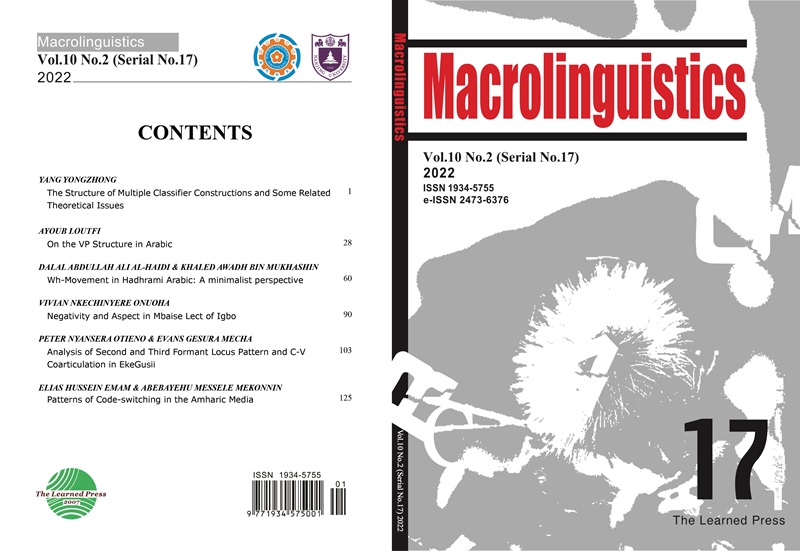Deriving Morphological Causatives in Moroccan Arabic
引用次数: 0
Abstract
: This paper explores the nature of the post-syntactic operations responsible for the representations of the linear order of terminal nodes. In particular, it argues in favor of a unified model of the morphosyntax and morphophonology, wherein the theory of Distributed Morphology and Optimality Theory operate in a single module. The testing ground is an investigation of the formation of morphological causatives in Moroccan Arabic. Herein, the process of realizing causatives is morphological gemination, whereby the second consonant of the root is doubled. Investigating the question of what triggers the infixal process, I argue against the linearization algorithm suggested in Embick & Noyer (2001), Embick & Marantz (2008), and Embick (2006, 2010). Instead, the claim I defend here is that the onus of the linearization process falls on the prosody in Arabic, the central assumption being that the morphosyntactic structure, the output of the syntactic derivation, is the input to OT morphophonological constraints. These constraints are responsible for the linearization of the terminal nodes of the syntactic derivation. I show that adopting one theory over others misses important generalizations about the language.摩洛哥阿拉伯语中形态因果关系的推导
:本文探讨了后句法操作的性质,这些后句法操作负责表示终端节点的线性顺序。特别是,它主张形态语法和形态音韵学的统一模型,其中分布形态学理论和最优性理论在一个单一的模块中运作。试验场是对摩洛哥阿拉伯语中形态因果词形成的调查。在这里,实现因果关系的过程是形态重叠,词根的第二个辅音加倍。在研究是什么触发了内积过程的问题时,我反对Embick&Noyer(2001)、Embick&Marantz(2008)和Embick(20062010)中提出的线性化算法。相反,我在这里捍卫的主张是,线性化过程的责任落在阿拉伯语的韵律上,中心假设是形态句法结构,即句法推导的输出,是OT形态语音约束的输入。这些约束负责句法推导的终端节点的线性化。我表明,采用一种理论而不采用其他理论会错过对语言的重要概括。
本文章由计算机程序翻译,如有差异,请以英文原文为准。
求助全文
约1分钟内获得全文
求助全文
来源期刊
自引率
0.00%
发文量
83
审稿时长
20 weeks
期刊介绍:
Macrolinguistics (ISSN 1934-5755, e-ISSN 2473-6376) is an international academic journal which is specialized in research papers of non-Indo-European linguistics. It is published biannually by The Learned Press and funded by the Double First-Class Initiative of Nanjing University. It aims at contributing to the complementarity and interaction of linguistic research worldwide.

 求助内容:
求助内容: 应助结果提醒方式:
应助结果提醒方式:


